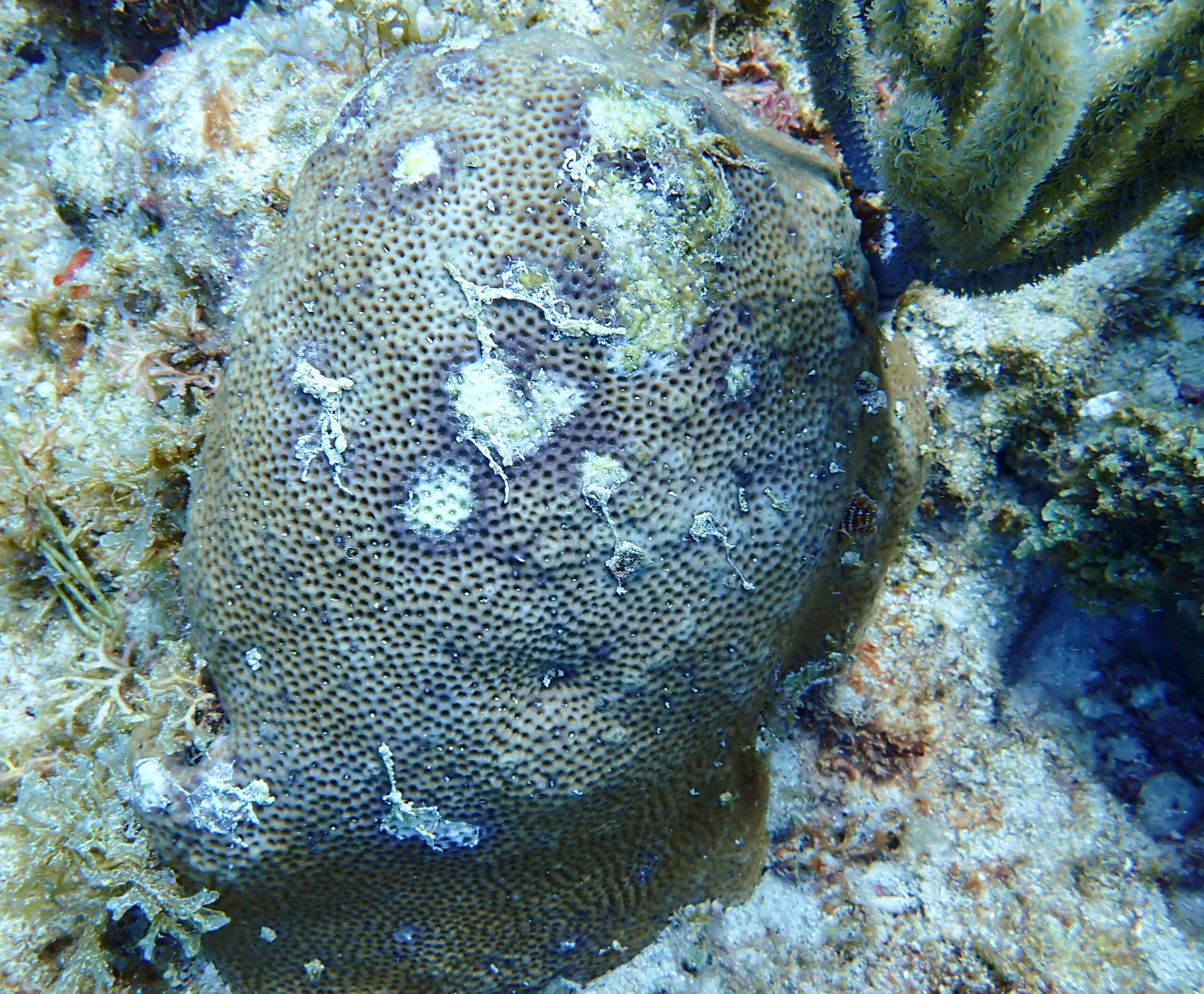

By Gemma Handy
A highly contagious coral disease – said to be the deadliest the world has ever seen – has been confirmed in Antigua and Barbuda.
And environmentalists say its effects in some areas are already devastating.
Stony coral tissue loss disease was first detected off the Florida coast in 2014 and has since spread rapidly throughout the Caribbean.
It affects more than 20 different species of important reef-building corals – and its high mortality rate means it wipes out most of those infected within weeks.
Local experts have been keeping a close eye out for signs of the disease with several samples sent to conservation body, the Atlantic Gulf and Rapid Reef Assessment (AGGRA) which has been tracking its spread, for assessment earlier this year.
Its presence here was confirmed last month.
“In July, we were conducting some marine surveys in Nelson’s Dockyard National Park, looking at marine life and biodiversity. We started to notice it on a couple of species,” marine ecologist Ruleo Camacho tells Observer.
“We reached out to a couple of dive shops and asked them to keep a look out. We’ve since had several reports – not only from Antigua but also off the coast of Barbuda – and it seems to be spreading pretty rapidly.”
Camacho says the sickness has been observed in several locations around the twin islands and up to 30 percent of some coral colonies have already been destroyed.
“It’s affecting a number of different species and is something we are quite concerned about.
“The unique thing and the reason why stony coral is being considered as the most dangerous and deadly coral disease that we have seen in the Caribbean region is that it can kill a coral within a matter of weeks to a couple of months, depending on the kind of species that it is,” he explains.
“Most other coral disease progression takes multiple months, sometimes years, and most of the time they stop.
“Stony coral is unique in that it can progress through these colonies extremely fast.”
Coral reefs are some of the most diverse and valuable ecosystems on Earth. They act as a vital buffer from storms and floods, they provide jobs for local people and they are home to more species than any other marine environment.
The sickness affects coral colonies differently, for reasons that are currently unclear. While some are quickly annihilated, the illness appears to stop in others.
Neither does anyone know quite what causes the disease but it’s thought to be due to bacteria, passed to other corals through direct contact and water circulation.
Some countries have used an antibiotic paste to treat infected creatures, a process which has seen some success in places including Florida and the Turks and Caicos Islands, but it is both costly and labour-intensive.
The illness typically appears as lesions, or patches of white exposed skeleton, and is particularly recognisable by its rapid-fire contagion.
Camacho is urging local divers to be vigilant.
“We welcome any reports that you’ve seen of corals displaying lesions. We are trying to ensure we get a better idea of where it’s happening and what’s happening,” he says.
There are also important guidelines that divers should follow such as washing gear in a one percent bleach solution before entering the water and between dives.
“If you don’t have one percent bleach solution, leave your gear out in the sun for the day and that kills most of anything that might be on it,” Camacho advises.
With government already grappling with Covid-battered coffers, forking out for expensive treatment such as amoxicillin seems unlikely. The pricey penicillin antibiotic must also be laboriously applied to individual infected coral heads.
But studies such as those by Karen Neely of Florida’s Nova Southeastern University, which has been studying the disease, report success rates in some trials of more than 90 percent.
For now, Camacho and his team will be monitoring the disease’s spread and striving to raise public awareness.
Reducing other stressors on the reef – by avoiding pollution and abiding by local fishing regulations, among other things – is also crucial, he says.
“Coral reef ecosystems are really the backbone of our marine ecosystems; they’re one of the major hubs for biodiversity. And especially right now in hurricane season, these reefs are able to reduce up to 90 percent of wave energy and storm surge, so doing everything we can to support and promote their recovery and healthiness is extremely important,” he says.
“I don’t like to say this,” Camacho adds, “but stony coral makes Covid look like a drop in the bucket; it makes most diseases that we face look like a drop in the bucket.”
Judith Lang, AGGRA’s scientific coordinator, advises Antigua and Barbuda’s marine experts to “think strategically about how the government, assisted by local conservationists and water-associated business communities, should respond”.
In other parts of the region, such as the Turks and Caicos, environmentalists are experimenting with new treatments.
“But no treatment currently exists to replace the amoxicillin that some Caribbean governments remain unwilling to touch with a 10-foot pole,” she warns.
“At best it’s very expensive, takes a huge amount of time and energy to execute, and can only save a small fraction of the affected population.
“However, over 15,000 corals in Florida later, Karen Neely still thinks the effort is worth it.”
Lang says large-scale coral rescue is one approach AGGRA is promoting. That includes collecting corals susceptible to the illness and holding them in captivity for future reintroduction to the wild.
The method requires hefty start-up costs plus significant outside help and funding, but can be used to eventually rebuild populations.
She adds that controlling fishing activities and disinfecting dive gear can also play a key role in protecting the region’s reefs.
Visit www.aggra.org for more details.
